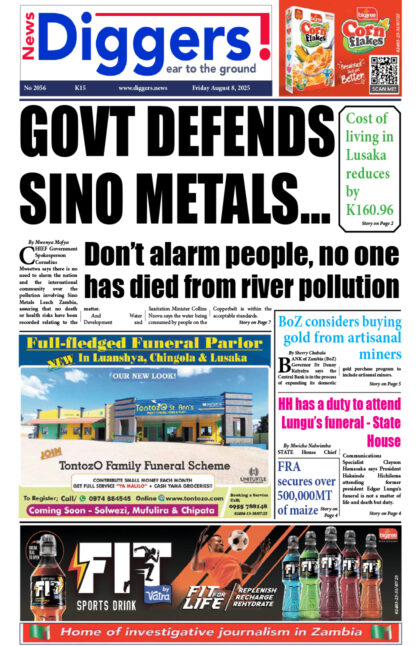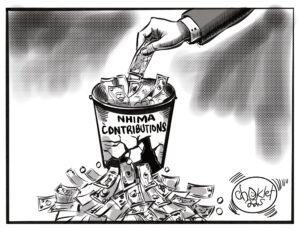In this Monday opinion, I draw your attention to the topic of Mining Revenue Sharing. Firstly, I will give a detailed description of what this constitutes. Lastly, I will proceed to discuss the current legal and policy provisions backing the formulation and implementation of a Mineral Revenue Sharing Mechanism (MRSM) in Zambia.
1.0 Preamble
Communities in resource-rich regions expect that resources should translate into social-economic development through the provision of infrastructure and basic services such as education, and health. The extractives sector provides a pivotal role to advance this developmental progression ultimately leading to poverty reduction. However, this can only be actualised if there are systems put in place to safeguard the interest of the local people. In the case of Zambia, the central government may have somewhat divergent objectives from Sub-National Governments (SNGs) on the use of mining revenue. This discrepancy might lead to a situation where communities are not compensated for the negative externalities arising from mining activities. Additionally, other social-economic pressing needs of both mining and non-mining communities may not be addressed. This cocktail leads to perpetual poverty in the country’s social landscape. This puts in context the need for the country to develop a Mining Revenue Sharing Mechanism (MRSM) that aims to achieve two primary objectives, namely:
(i) To attain poverty reduction through the distribution of mining revenue to mining and non-mining councils; and
(ii) To compensate communities hosting mining activities for the negative externalities generated by mining processes.
Clearly outlining the objectives of an MRSM is important in establishing the modality of how such a system will work. There are many conduits of attaining objective (i), however, it must be stressed that the distribution of a certain quantum of mining revenue to a particular SNG must be based on several indicators which contribute to poverty levels in that jurisdiction.
2.0 What is a Mineral Revenue Sharing Mechanism (MRSM)?
An MRSM can be defined as an arrangement through which government revenue from extractive activities is shared with SNGs that are legally entitled to receive or spend public funds. In Zambia’s case, SNG refers to the local government or the councils. Depending on the needs of a certain mining jurisdiction an MRSM can be designed to achieve several social, economic, and political objectives including compensation of negative externalities arising from mining activities, compensation for the resettlement or loss of land, and building post-mining resilience in communities through investment in non-mining activities.
Generally, the fiscal architecture of an MRSM falls into three main categories:
(i) Centralised system – in this system some mining revenue is collected by the central government and distributed to SNGs based on a certain formula.
(ii) Decentralised system – in this system SNGs directly collect some mining revenue through defined rates and the central government does not impose restrictions on its use.
(iii) Hybrid system – this is a combination of the centralised and decentralised system.
3.0 What are the current legal and policy provisions relevant to the implementation of an MRSM?
A provision was included in the 2008 Mines and Mineral Development (MMD) Act that stipulated that a portion of the mineral royalty could be shared with the affected communities. This provision was removed from the current mining law of 2015, largely due to a lack of clarity on the fiscal architecture of such a mechanism. However, the current mining law (2015 MMD Act), the constitution, and the Mineral Resources Development Policy (MRDP) of 2013 provide for the legal and policy backing of the formulation and implementation of an MRSM in Zambia.
(i) Constitutional Provision
The Zambian Constitution provides in Sections 255, article (f) that “Benefits accruing from the exploitation and utilization of the environment and natural resources shall be shared equitably amongst the people of Zambia”. To a large extent, the constitution provides and acknowledges that the minerals need to be used for the benefit of the communities even though it does not explicitly state the MRSM.
(ii) The Mines and Minerals Development Act No.11 of 2015
There is no specific law that provides for the MRSM in the 2015 MMD Act. However, Section 4 provides general principles for mining and minerals development. These include the conservation and prudent use of mineral resources, the need for citizens in general, and those in communities where mining activities are being conducted in particular, to benefit from the resources, and the observation of safe, healthy, and environmentally friendly mining practices.
(iii) Mineral Resources Development Policy (MRDP) of 2013
The Minerals Resources Development Policy of 2013 on Citizens Economic Empowerment in the Mining sector provides for under section 7.7, that “Government reserve a portion of mineral royalty for the development of businesses in mining communities”. This is to be done to promote economic empowerment in the mining sector. However, there remains no mechanism in place to reserve a portion of mineral revenues for local community development.
In the context of the above legal and policy provisions, the importance of crafting and implementing an MRSM cannot be overemphasised. This is it for this week, in the next Monday opinion, I will elaborate in detail the important elements of an MRSM and how these should be integrated into designing and implementing a robust MRSM framework for Zambia.
About the Author
Webby Banda is a Senior Researcher (Extractives) at The Centre for Trade Policy and Development (CTPD) and a Lecturer with the University of Zambia, School of Mines
























